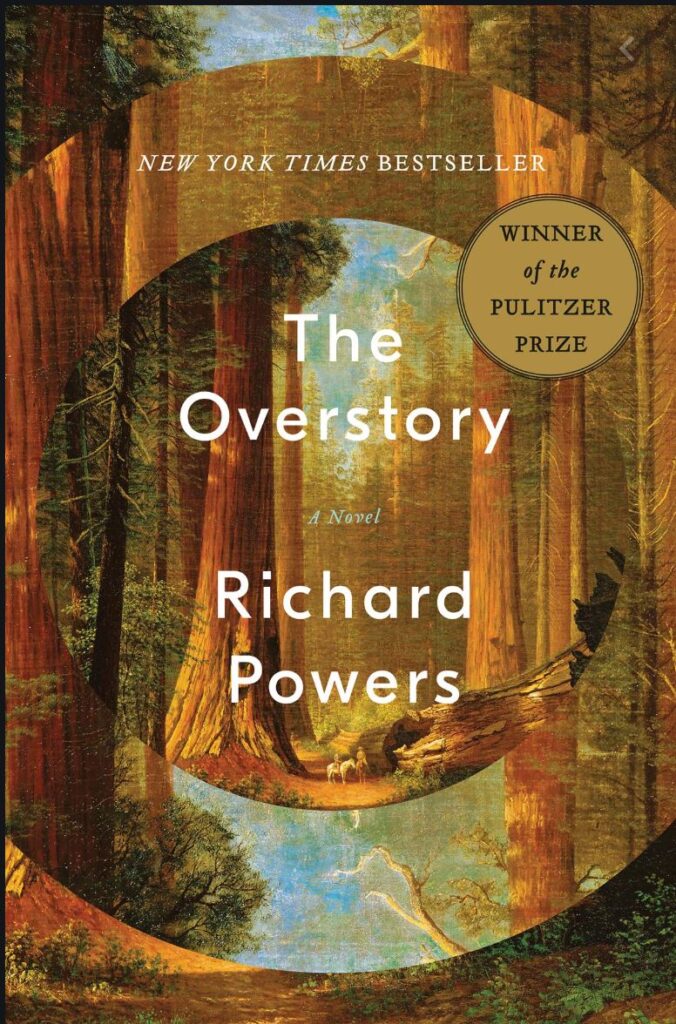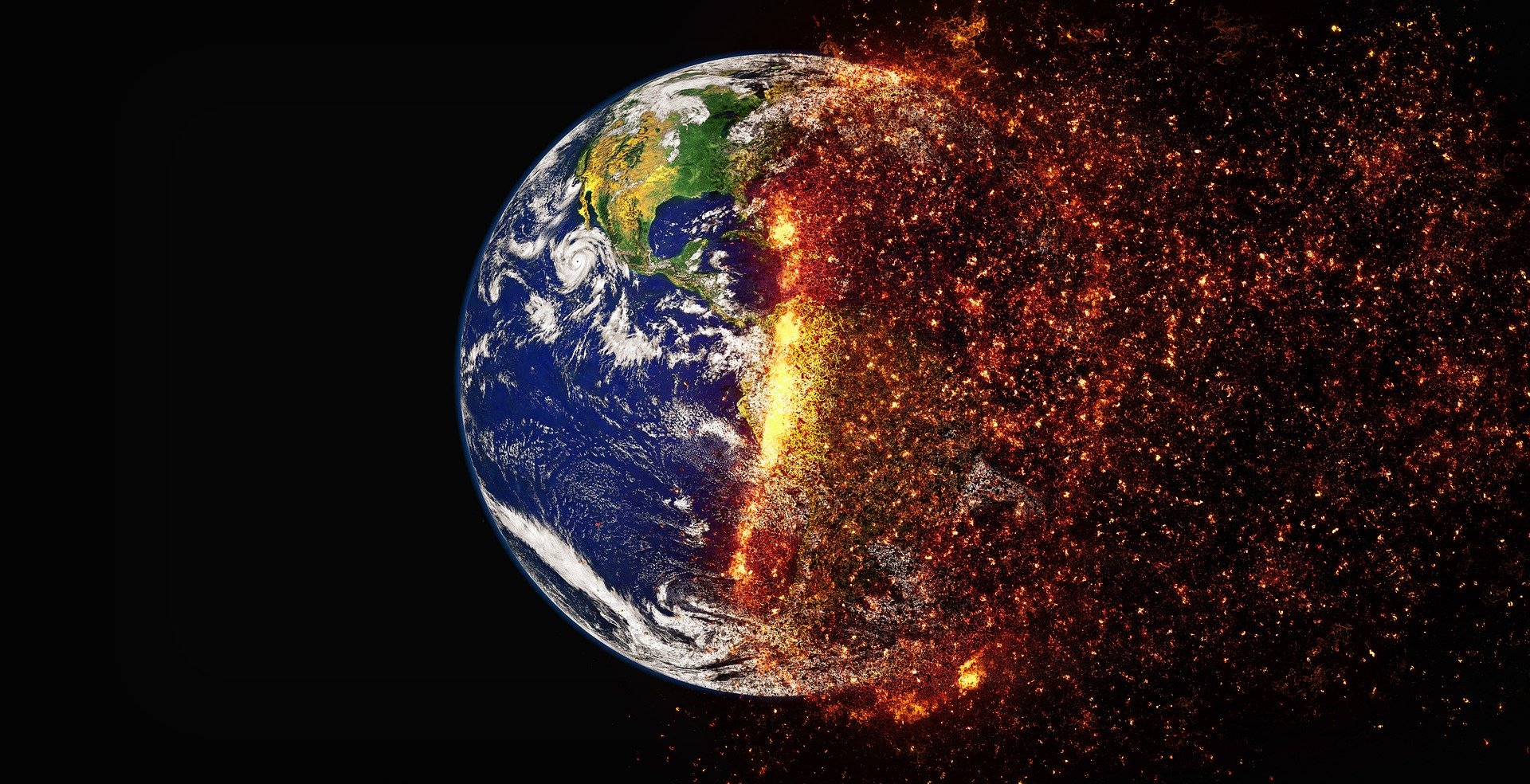
Core Text: Powers, Richard. The Overstory. W. W. Norton, 2018.
Summary:
The Overstory, by Richard Powers, will change the way you think about trees, and by extension, humanity’s place in the natural world. Winner of the Pulitzer Prize in 2019, it is a novel about a small group of exquisitely drawn characters who, through the course of the novel’s development—Roots, Trunks, Overstory, Seeds—come together over their deep personal connections to trees. Somehow, incredibly, the trees themselves emerge as memorable, sentient beings. The Overstory is a rare novel that transports the reader from a modern-day, urban existence to contemplate the natural world in an authentic way. Readers will notice at a greater depth the ways in which destructive policies for consumption of natural resources—forests—deplete and devalue what is essential to delicate and interconnected ecosystems.
It begins with a breathtaking description of the American chestnut tree, chestnuts pocketed at the turn of the last century in a romantic immigrant gesture and carried West to be planted in a new home. American chestnuts were a prime food and wood source and one of the most populous trees in eastern North America less than a hundred years ago, before chestnut blight all but caused their extinction. Chestnuts are male and female; only one survives the journey, a sentinel.
The characters have varied backstories, but inexorably come together to fight the clear cutting of ancient trees. There are high stakes involved for the characters’ eco-bravery as they face the brutality arrayed against protesters. There is suspense, treachery, love and loss, told through a style of writing perfectly adapted to the language of trees: “Sun and water are questions endlessly worth answering.” The meditative, deliberate tone of tree-in-translation seems to compel the reader to simplify, to declutter, eschew materialism to focus on visceral life forces.
The drama of the Timber Wars and the loss of forest to short-sighted profit-driven exploitation is the backdrop to an extraordinary imagining of the life of trees and the interdependence of life on the planet. Powers seems to be saying that we need to keep ‘branching’ in our search for solutions to the climate crisis brought about by carbon emissions and the obliteration of forests, whose noble trees perform the miraculous task of sequestering carbon. Sun, water, air, soil: seeds.
Teaching Resources:
Suzanne Simard: How Do Trees Collaborate? NPR-WNYC TED Radio Hour, June 26, 2020
“Suzanne Simard is a professor of forest ecology at the University of British Columbia. Her work demonstrated that these complex, symbiotic networks in our forests mimic our own neural and social networks. She has over thirty years of experience studying the forests of Canada.”
One of the characters in The Overstory is a female scientist who theorizes that trees communicate with one another. She is humiliated and hounded from the profession for what’s seen as lunacy before finding redemption many years later with the discovery of micorrhyzal networks, through which trees care for one another, cooperate across species. They transfer information and nutrients through a language heretofore unknown to humans, using fungal networks. Micorrhyza literally means fungus root, Simard tells us in her TED talk; the mushrooms we see are ‘just the tip of the iceberg’; their fungal roots, mycellium, literally cover the soil in the forest floor and make possible the exchange of carbon for nutrients. Symbiotic, cooperative relationships are, well, unearthed. Chemical warnings of beetles, for example, help trees gather defenses. Bonus: the site has family-friendly activities to engage all learners.
https://www.npr.org/2020/06/26/882828756/suzanne-simard-how-do-trees-collaborate
The American Chestnut Foundation provides fascinating information on the history and efforts to revive the species. Prized for its straight, light, and rot-resistant wood; valued as a food source for animals; nuts were a cash crop for farmers—they were (and are?) sweeter than other types of chestnuts. A lone American chestnut plays an indelible part in the life of generations of a family who document its growth through photography, capturing its long-term movement while illustrating the way that art amplifies our world.
Importantly, reviewing the site raises the question: if a natural disaster extinguishes a species, should we try to reverse the destruction? The chestnut blight was brought to the US from Asia, arguably the result of human travel and migration. While Asian chestnuts had developed a resistance, American chestnuts were wiped out.
The American Chestnut Foundation’s site bridges the not-too-distant local past and the tree’s predominance in the northeast with conservation and preservation efforts that we can witness.
Why does this famous protector of trees now want to cut some down?
By Warren Cornwall Oct. 5, 2017 American Association for the Advancement of Science (AAAS) Science
Jerry Franklin is a scientist, now in his 80s, who is reconsidering his early, important work in the Timber Wars of the Pacific Northwest in the 1980s and ‘90s. He is a seminal figure in producing the scientific research in the Forest Service report that resulted in the 1994 federal law banning clear cutting of thousands of acres of old-growth forest on federal land, the Northwest Forest Plan. It pitted him squarely against the lumber industry (whose media efforts, focused in this case on the saving of the eco mascot native to old-growth forests, the threatened Spotted Owl, included “Save a logger, eat an owl.”).
A hero of conservationists, his thinking has evolved, from witnessing the devastation of the Mt. Saint Helens eruption in the 1980s. The subsequent regrowth—“it was like a supermarket” of food to support biodiversity in the forest ecosystem—led him to begin to rethink his research. The article opens with his surveying ‘the scene of the crime’ of the targeted logging that he now supports. “Franklin is drawing the ire of conservationists for promoting forest management techniques—including targeted logging—designed to create more of the scraggly patches of protoforest that ecologists call ‘early seral’ communities.”
The environmentalism of the characters in The Overstory can be seen as heroic–or misguided, depending on whether “scientific theory” is interpreted in the common way that “theory” is understood. But scientific theory, including climate theory, is infinitely more weighty: it is the overwhelming evidence of proof of theory, not a mere proposal.
The article illustrates how science is done: it is an evolving process that is anathema to dogmatic thinking. Scientific theory is not immutable; reality, observed and studied, is the guide to inquiry.
https://www.sciencemag.org/news/2017/10/why-does-famous-protector-trees-now-want-cut-some-down
Writing Prompts:
Is Powers trying to change readers with The Overstory? Does fiction have the power to turn readers into eco warriors?
The sentinel nature of trees harkens to the power of bearing witness. What are effective ways that we can bear witness to the changes in our environment caused by climate crisis?
Are there ways in which trying to rescue species of trees, animals, and other life forms is counterproductive?
Reviewing the Science Magazine article on Jerry Franklin, who revised his thinking after a lifetime of protecting old-growth forests to theorize that targeted logging promotes biodiversity: What is the nature of scientific inquiry and how can its processes be explained in a way that encourages further study?


